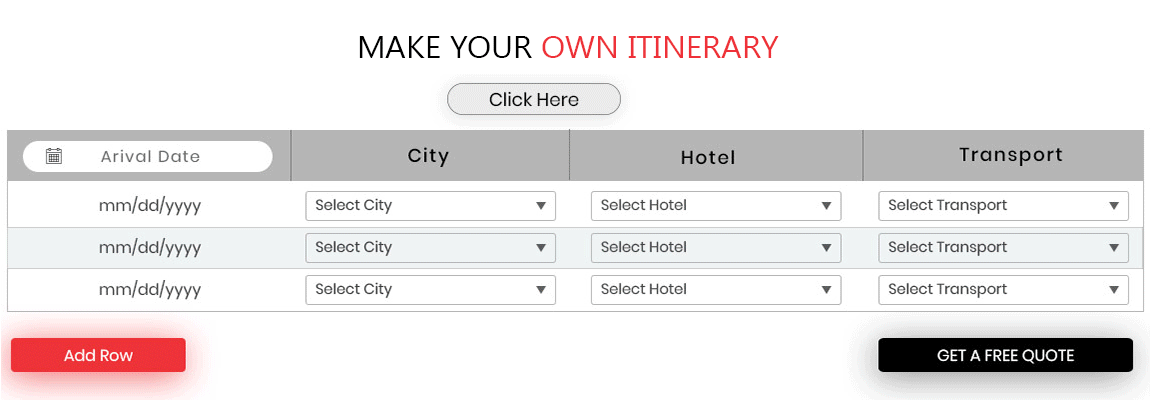Aazhimala Siva Temple, Kerala.
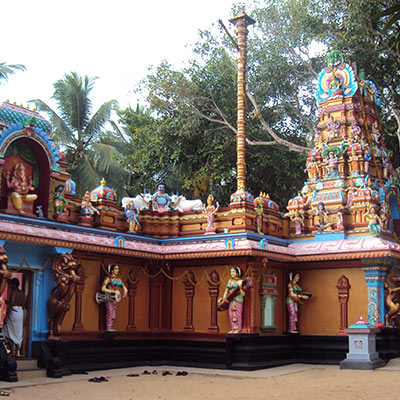
- : Poovar to vizhinjam road before Pulinkudi jn then, Azhimala Temple Road, Kerala 695501.
- : Nearest Bus Station - Thampanoor (Trivandrum Bus Station) Nearest Airport - Trivandrum International Airport Nearest Railway Station- Trivandrum Central.
- : 5:00 AM - 9:00 AM & 5:00 PM - 8:00 PM
- : 1-2 hours.
- : the best time to visit would be during dawn and dusk..
- : Budget & Luxury Hotels are available..
 Basic info
Basic info
Aazhimala Siva Temple is an ancient Hindu temple in Kovalam. Aazhi means sea and Mala means hill. It has been named Aazhimala as it is located right on the golden shore of the Arabian Sea. Positioned on a slightly elevated platform, the temple is dedicated to Lord Shiva. The temple receives maximum no. of pilgrims on Tuesday as it is considered an auspicious day by the devotees of Lord Shiva.
The temple hosts an annual festival between January and February, during which devotees offer “Naranga Vilakku” (an oil lamp lit on a lemon). Thousands of lamps on seashore are indeed a sight to behold. Besides, the temple offers beautiful views of the Arabian Sea and Aazhimala Beach as the temple is positioned at a slight elevation.
Alappuzha, Kerala.
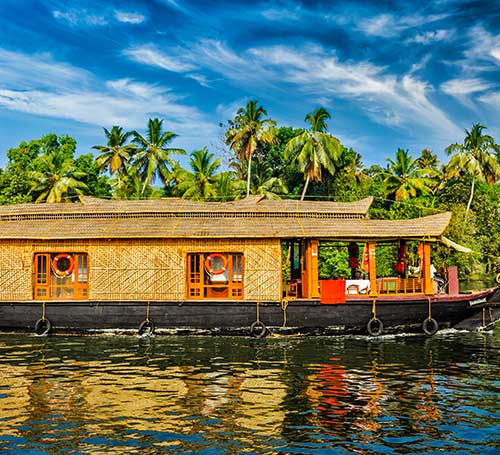
- : Alappuzha, Central Travancore, District Alappuzha..
- : Nearest Airport-Cochin International Airport (78 km). Near Railway Station- Alappuzha Railway Station (In the city).
- : Any time
- : 2-3 days..
- : Best November to March..
- : Budget-friendly and luxurious hotels and resorts are available..
 Basic info
Basic info
Formerly known as Alleppey, this city is the administrative headquarters of Alappuzha District of Kerala. The name Alappuzha is a toponymn where Alam means ‘water’ and puzha mean ‘watercourse’ or ‘river’. In 2016, the Centre for Science and Environment rated it as the cleanest town in India. It also ranks third among the districts in the literacy rate in the State of Kerala. This pace is also called the “Venice of the East”.
This city is considered as the oldest planned city of this region and the lighthouse built on the coast is the first of it’s kind along the Laccadive Sea coast. The district was formed on 17th August 1957.
The town with canal, backwaters, beaches and lagoons, was described by Lord Curzon as the Venice of the East and is hence known as the Venetian Capital of Kerala. An important tourist destination in India, the Alappuzha backwaters attract a large number of tourists.
It is also the access point for annual Nehru Trophy Boat race held on the Punnamada Lake, on the second Saturday of every August. This is the most competetive and popular boat races in India. The mullackal chirap festival held for ten days is also a major attraction in the month of December. Historically, the city is the home to the Punnapra-Vayalar against the British and also the revolt against the Feudal Raj. As for the commodity manufactured, Coir is the most important. A Central Coir Research Institute is located at Kalvoor and the Coir Board was established by the Central Government.
 Things to do
Things to do
- Pathiramanal
- R-Block
- Karumadikuttan-a renowned Buddhist pilgrim centre
- Kumarakodi
- Saradha Mandiram, Mavelikkara
- Krishnapuram palace
- Sea View park
- Vijay beach park
Anchuthengu Fort, Kerala.
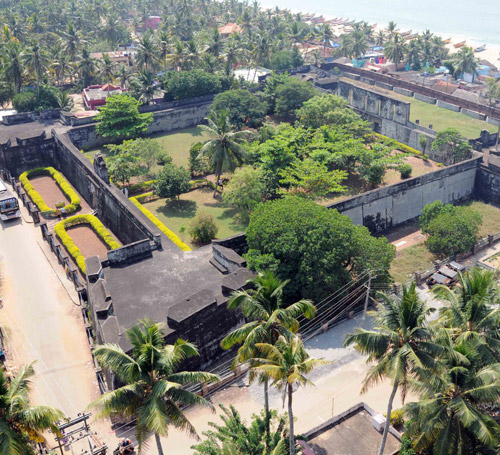
- : Anchuthengu Fort, Anchuthengu, Kerala- 695309, India..
- : Nearest Railway Station: Chirayinkeezhu (7 km) and Kadakkavoor (8 km), Nearest Airport: Trivandrum International Airport (33 km)..
- : 8:00 am to 5:00 pm
- : 2-3 hours..
- : December to March..
- : Budget-friendly and luxurious hotels and resorts are available..
 Basic info
Basic info
The Anchunthengu Fort (also called as Anjengo Fort), which was established in 1696 by British East India Company served as the first signaling station for ships arriving from England and in the history it is considered as the oldest establishments of the EIC. This famous fort is on the shores of clean Anchuthengu beach. Thus those who want to study history can gather a live view of the olden times which is very much captivating.
Locals say that the place got its name because of the five coconut trees that were originally on it when the property was gifted to the British by the Queen of Attingal. The fort was first setup after the Queen’s permission was received. It is located near the town of Anchuthengu and it was the East India Company’s first permanent post on the Malabar Coast. Its construction began in 1696 and even though the fort was attacked by pirates, the English prevailed. The EIC completed the fort in 1699.
The fort was square with four bastions and had a garrison of 400 Europeans and 70-80 to passes.The important history of the fort remains the rebellion at Attingal on 15 April 1721 where local notables who objected to EIC’s policy of providing the Queen with gifts but ignoring them, attacked a 140-man EIC expedition bringing gift to the Queen from Anjengo fort. After massacring the expedition, the locals attacked the fort which withstood their efforts. The seige ended when the EIC sent relief force from Thalassery.
The fort also played an important role in the Anglo-Mysore War, as during the time period, the EIC stored their ammunition at the fort. It was made in square shape along with this the fort has four bastions, each of which mounted eight guns for protecting it from enemies. There was also a battery of 20 guns which faced the sea. Thus protecting the fort from both land and sea attacks.
The snow Luconia for the Anjengo Pilot Service was built by the Bombay Dockyard in 1748 is also a must to see it here.
 Tourist attractions
Tourist attractions
A 130-feet tall light house
The ruins of one of the earliest factories set up by the British East India company.
The Churches which adherence to the European architectural style.
Unexplored and Clean Anchuthengu Beach
Athirappilly Falls, Kerala.
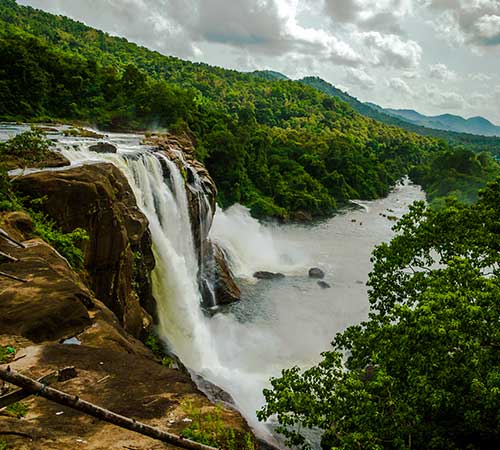
- : Athirappilly, Chalakudy Taluk, Thrissur District, Kerala, India..
- : Nearest Railway: Chalakudi Station-30km, Nearest Airport: Kochi international Airport- 55km..
- : Any time.
- : 3 - 4 hrs..
- : September to February.
- : Budget-friendly and luxurious hotels and resorts are available..
 Basic info
Basic info
Athirappily falls is the largest waterfall in Kerala, situated in Athirappily of Thrissur district. It is also known as the “Niagara of India”. It is situated on the highway connecting Tamil Nadu and Kerala amidst the thick forest and windy roads. One of the most visited waterfalls of south India has in it extreme scenic beauty. This water fall never dries up, so it can be visited through out the year.
Dense forest and great diversity of animals will make your journey as beautiful as Athirappily falls. Athirappily falls on the Chalakudi River along with the Vazhachal forest division is a paradise for wildlife lovers and nature enthusiast.
The fall is 100 meter wide and stands tall at 80 feet. It has 4 drops. This area is very rich in diversity of many endemic flora and fauna. It has been blessed with spectacular scenic views and attracts lots of tourists. Rainbows could also be seen here many times.
While in Athirappily you can’t miss the opportunity of the “Daily Jungle Safari”. In the safari one is expected to see Asiatic elephant, Tiger, Leopard, Bison, Sambar and Lion-failed Macaque. In addition to this, Vazachal forest division is an important bird area. It is the only location where one can find all the 4 South Indian species of Hombill, which is the state bird of Kerala. Where else one can find such diversity of life forms? Which makes Kerala “God’s Own Country”.
It has been named by the Former Union Environment Minister and Congress leader Jairam Ramesh as “Silent Valley”. It is also famous for film shooting. “Ravaan” a Mani Ratnam’s movie was shot at this place.
 Tourist attractions
Tourist attractions
Sholayar Dam
Vazhachal Falls
Charpa Falls
Kundoormad Waterfalls
Malayattur Wildlife Sanctuary
Chalakudy River
Thumbormuzhi Dam and garden
Paniely Poru
Abhayaranyam Zoo
Peringalkuthu Dam
Kodanand Elephant Training Centre.
Bekal fort, Kerala.
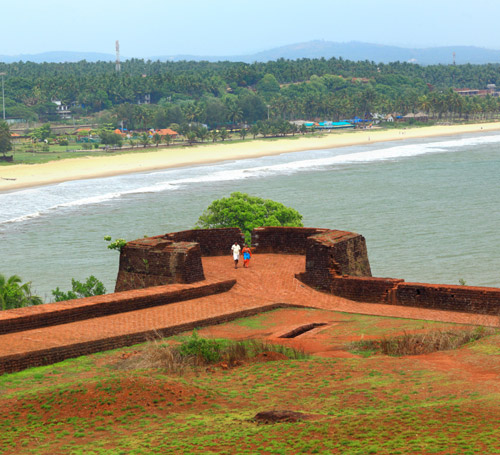
- : Bekal Fort, Kasaragod Road, PO Bekal Fort, Beside Bekal Fort Railway Station, Dist-Kasaragod, Kerala 671316..
- : Nearest Airport: Mangalore-50 km, Nearest Railway Station: Kasaragod-10.7 km..
- : 8 am to 5:30 pm.
- : 5 to 6 hrs including nearby visiting places..
- : October to February..
- : Budget-friendly and luxurious hotels and resorts are available..
 Basic info
Basic info
Bekal Fort is the largest fort in Kerala, situated in the District of Kasaragod of North Malabar region. India declared Bekal fort a special tourism area in 1992 and after three years the State formed Bekal Tourism Development Corporation for its promotion.
It is spread over an area of 40 acres. It was built by Shivappa Nayak in 1650 AD. It is about 130 feet above the sea level located on a headland which is about 35 km. This is a visiting place and its main attractions are an observation tower fitted with beautiful peepholes, the Anjaneya Temple having a famous masonry and two Theyyam sculptures which are built from laterite. The underground passageways and the rock garden make this place an important tourist attracted place.
Bekal Fort can be reached through railways or airways, Bekal fort railway station is the nearest railway station where as Mangalore is the nearest airport.
The fort appear to emerge from the sea as 3/4th part of the fort is in contact with the water. This view compels the tourist to visit this place. Bekal Fort was not an administrative centre and doesn’t include any place or mansion. It was an important military station for Tipu Sultan. The defence mechanism in the form of zig zag entrance, surrounding trenches, holes on the outer walls (against naval attack) is yet another masterpiece of ancient Indian architecture. The view from the top of the fort will mesmerize anyone, especially the long coast line, the towns Kanhangad, Pallikkara and Bekal a feast for the eyes. Nearby Mukhyaprana temple of Hanuman and ancient Mosque built by Tipu Sultan is a fine example of religious harmony prevailed in the area.
Along the walkway of the beach many trees have been planted which gives a splendid look to enjoy the scenic beauty of this place. At night also it has a great look since the whole area has been lit up with special lights giving a new dimension to its beauty.
This place is also famous in film industry as many shootings has been done here. The song ‘Uyire’ (Tamil) from the movie Bombay was shot here at this fort.
BlueC event-hub, Kerala.
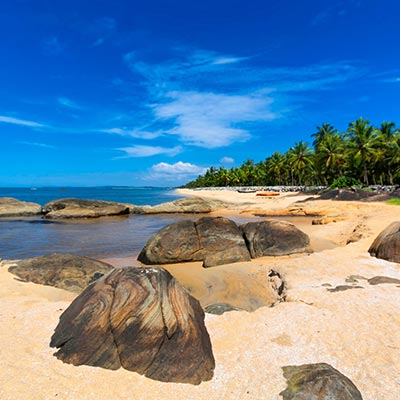
- : .
- : .
- :
- : .
- : .
- : .
 Basic info
Basic info
Cherai Beach, Kerala.
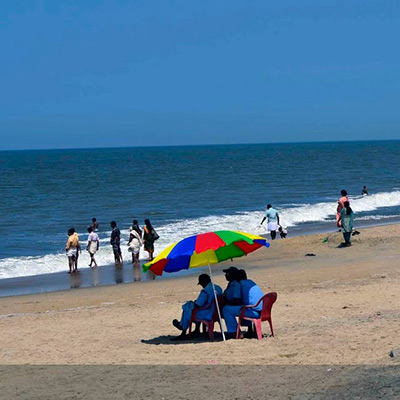
- : Kochi, Kerala, 683514, India.
- : Nearest railway station: Ernakulam Junction, about one km from the main boat jetty
Nearest airport: Cochin International Airport, about 20 km. - : All Day
- : 1-2 hours.
- : October to March.
- : Budget & Luxury Hotels available..
 Basic info
Basic info
Cherai Beach is a beach situated in Cherai, northern side of Vypin Island in Kerala. The 10 km long beach is one of the most visited beaches in the state. Famously known for dolphin sightings, the beach is quite suitable for swimming. As the beach is peaceful, less-crowded, and clean, it attracts a significant no. of tourists.
Cherai Beach, Kerala.

- : Cherai, Vypin Island, Dist-Ernakulam, Kerela-683514..
- : Nearest railway station: Ernakulam Junction (one km from the main boat jetty). Nearest airport: Cochin International Airport, about 20 km..
- : Any time
- : 1-2 Days.
- : Best September to March..
- : Budget-friendly and luxurious hotels and resorts are available..
 Basic info
Basic info
Located in the north side of Vypin, Cherai is the smallest town which connects North Pravur and Kodukaloor. Cherai has the longest beach in Kochi which measures to 10 kms. It’s main attraction are the frequently seen dolphins. Cherai is also an important place playing a major role in shaping the history of Kerala by becoming the birthplace of two prominent political personas of modern Kerala- Mathai Manjooran and Sahodaran Ayyappan.
The Cherai Gowreeshwar Temple which is one of the main Hindu temples is also located here and is maintained by V.V.Sabha.
The festival in this temple is the biggest in the Ernakulam district and happens every year towards the last two weeks of January or first two week of February. It’s main attractions is the march of 20-30 elephants.
Another famous temple is the Azheekal Sree Varaha Temple famous for it’s beautiful chariot and is one of the oldest temple owned by the Gowda Saraswatha Community.
 Things to do
Things to do
The Kottakavu Mar Thoma Syro-Malabar Pilgrim Church which is the first church in India. The church is also one of the seven founded by St. Thomas Apostle in the first century.
Portuguese Fort built in 1503 by the Portuguese also known as Aya Kotta, one of the oldest European monument in India built to safeguard the Famous Muzris Port.
The Pallipuram Syro-Malabar Church built by Portuguese in 1577 which has the exquisite picture of Ave Mary on top of the Altar.
Fort Kochi, Kerala.
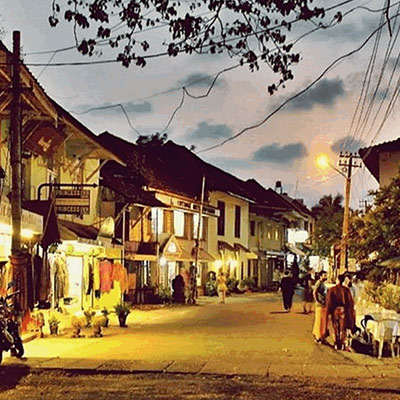
- : Fort Kochi, Kochi, Dist-Ernakulam, Kerela-682001..
- : .
- : Any Time
- : 3 Hrs..
- : October to March.
- : Budget-friendly and luxurious hotels and resorts are available.
 Basic info
Basic info
Fort Kochi which is also called Cochim de Baixo is a region in the city of Kochi. This part is water bounded towards the south-west of mainland Kochi and togather it is known as Old Kochi or West Kochi. Adjacent to Mattancherry, the Corporation of Cochin was formed by amalgamation of three municipalties along with a few adjoining areas in 1967. The name comes from Co-chin which means China. When during the 14th century Chinese came to this region and installed Chinese nets, the place looked like China Kochi was a fishing village in the Kingdom of Kichi during the pre-colonial Kerala. The territory would later be known as Fort Kochi and granted over to the Portuguese in 1503 by Rajah of Kochi after the forces of Albuquerque helped him fighting the forces of Saamoothiri of Kozikode. The permission to build Fort Emmanuel near the waterfront to protect their commercial interests. Since the beginning of Common era, Arabian and Chinese traders sourced spices, especially pepper, cinnamon, cardamon, cloves, sandalwood etc. Cultivation and trade of these valuable goods shaped the history of the region and even today, Kochi is an important centre of spice export. Written records show that the region had Hindus, Christians and a Jewish minority. It is one of the best place to visit in and high volume of visitors come each year to have a look of it for which low floor Volvo buses were launched by the State Government for facilitating easy travel.
Halcyon Castle, Kerala.
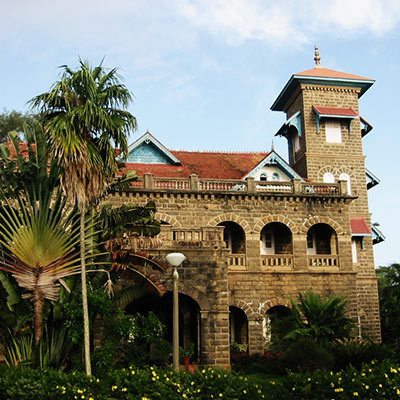
- : Halcyon Castle, Thiruvananthapuram, Kerala 695527.
- : Kovalam is very well connected by road. Tourists can hail public transport to reach the castle. .
- : Open 24 hours
- : 1-2 hours.
- : October to March.
- : Budget & Luxury Hotels available..
 Basic info
Basic info
Halcyon Castle was constructed in the princely state of Travancore (modern-day Kerala) in 1932. It was established by M. R. Ry Sri Rama Varma Valiya Koil Thampuran, the consort of Maharani Sethu Lakshmi Bayi, for their family. Valiya Koil Thampuran sold the entire property to the Government of India in 1964. Later, it was sold to a private hotel resort group. Owned by Ravi Pillai at present, the 5star hotel is managed by the Leela Hotel Group.
Jatayu Natural Park, Kerala.
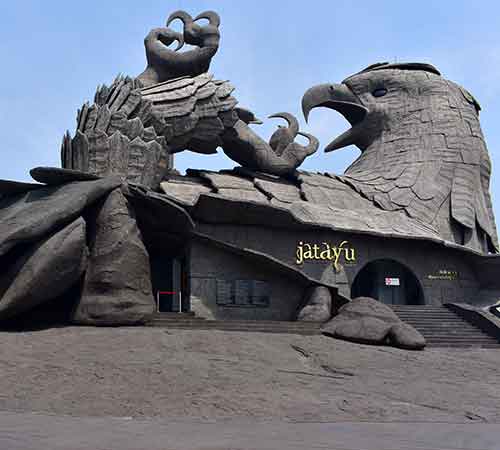
- : Jatayu Junction, Chadayamangalam, Kollam District, Kerala, 691534.
- : Nearest railway station: Kollam 38 km,Nearest airport: Trivandrum International Airport 51 km..
- : 10 am to 9 pm
- : 7 hrs..
- : September to May.
- : Budget-friendly and luxurious hotels and resorts are available..
 Basic info
Basic info
The first ever Public-Private-Partnership (PPP) tourism project in Kerela under the BOT (build-operate-trnasfer model), the Jatayu Nature Park, holds within itself world’s largest functional bird sculpture and is located at Chadayamangalam (Jatayumangalam) town in Kollam district of Kerala. It is also known by the name of Jatayu Earth’s Center and Jatayu Rock Park. This park is partially operational after the Adventure Rock Hill opened for public on 5 December 2017 and it is being designed by Rajiv Anchal, who is a film director, screenwriter, and sculptor working in Malayalam Cinema.
The sculpture of the mythical bird Jatayu is the most attractive thing to look at this place, since it is about 200 feet (61 m) long, 150 feet (46 m) broad, 70 feet (21 m) in height, covering around 15,000 square feet (1,400 m2) of floor area on the rock named Jatayupara (where the bird took its last breath).
About JatayuThis mythical bird belongs to the Ramayana period which is described by the scripture as a demi-god in the form of an eagle, who fought fearlessly and died for rescuing Sita from Raavan, the demon king, who was abducting her. It was believed that when his wings were cut down by Raavan, this bird fell on the rocks of Chadayamangalam.
 Tourist attractions
Tourist attractions
Thenmala
Palaruvi Waterfalls
Rosemala
Maruthimala
Kuttalam
Kappad Beach, Kerala.
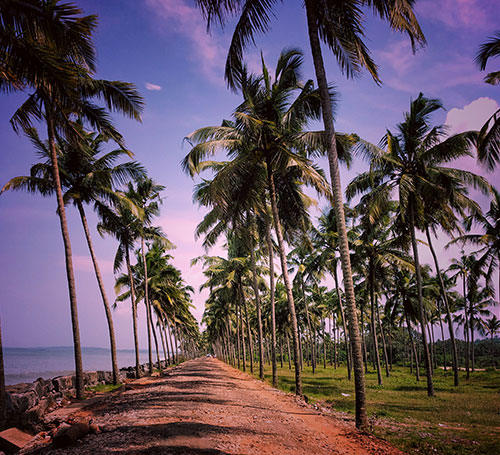
- : Kappad Beach, Kozhikode, North Kerela-673304..
- : Nearest railway station - Kozhikode (35 km). Nearest airport - Calicut International Airport (45 km)..
- : Any time
- : 1-2 days.
- : October to March..
- : Budget-friendly and luxurious hotels and resorts are available..
 Basic info
Basic info
The Kappad or Kappakadavu beach near Kozhikode is the beach which is the place of “landing” of Vasco da Gama in India in the year 1498. A stone monument is installed by the government to commemorate it. A Rs 1.5 crore program was launched by the Kerala Tourism Minister in 2007 to beautify the beach which is now completed. The beach now has a corniche and park which includes a restroom, restaurant and seating. A walk in and around the place gives an idea of its historic relevance. It’s calm environment nestled away from the hustle and bustle of the city makes it the perfect holiday destination for relaxation. The rocks and small hills add to its charm and the nearby shacks are always stocked with excellent local delicacies and tea.
Many migratory birds can be easily spotted around the place. The beautiful beach, a truly majestic destination will always remain an important spot in the history of India. It portrays features of most of the beaches in Kerela that is the white sands, greenery of coconut trees, beach side fishing village and wooden fishing boats which always rests on white sand.
it also has rocky areas which holds within itself an ancient Hindu Temple, whose deity is 800 year old rock top shrine is Devi, the female Goddess.
 Things to do
Things to do
- Kappd Backwaters-These are a labyrinth of canals, lakes and lagoons with placid waters and are having immense natural beauty.
- Pookot Lake-It is a fresh water lake, surrounded by the thick trees which provide a soothing view with greenery all around.
- Thusharagiri Water Falls- One of the a popular attraction, picnic and tourist spot surrounded with green trees.
- Kadalundi Bird Sanctuary-It is home to both resident as well as migratory birds
Karthyayani Devi Temple, Kerala.
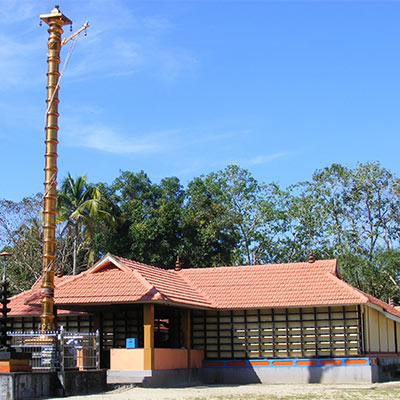
- : Cherthala Road, Kodathikavala, Cherthala, Kerala 688524.
- : The temple can be reached in private taxis, cabs or auto-rickshaws. .
- : 5am-7pm
- : 1 - 2 hrs.
- : The best time to visit the temple is during November - December, at the time of the annual Karthika Pooja ceremony..
- : Budget & Luxury Hotels available..
 Basic info
Basic info
Karthyayani Devi Temple is a famous Hindu temple situated at Cherthala, which is the second famous pooram in Kerala. The temple is dedicated to Karthyayani Devi, who is famous as Mangalya Dayini, the provider of welfare and prosperity and remover of obstacles for the marriage of young girls. Ayyappan is the sub deity in the temple.
As per the legend, the famous Indian saint Vilwamangalam Swamiyar was going back after consecrating Padmanabha Swamy at Sree Padmanabha Swamy Temple in Thiruvananthapuram, he saw Devi at this place and consecrated her in the temple.
During the annual festival in Kerala, Aarattu is held twice every day at the temple. Karthika Star Day in the Malayalam month of Vrichikam is also celebrated at the temple.
Kovalam Beach, Kerala.
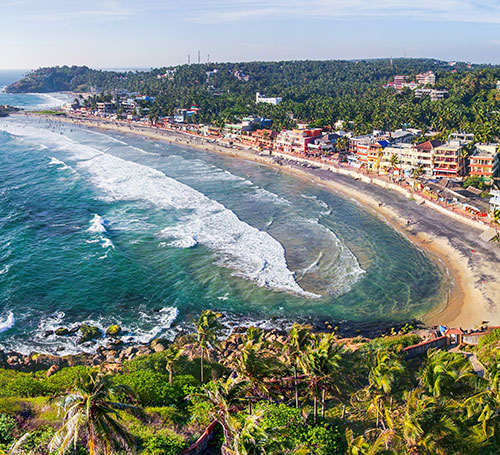
- : Kovalam Beach, Kovalam, Dist-Trivandrum, Kerela-695527..
- : Nearest railway Thiruvananthapuram Central railway station (16km). Nearest Airport-Trivandrum International Airport (10 km)..
- : Any time
- : As per convenience.
- : September to March.
- : Budget-friendly and luxurious hotels and resorts are available..
 Basic info
Basic info
This is a beach which faces the Arabian sea and is at the metropolitan area of Thiruvanthapuram of Kerela, about 18 km from the centre of the city. Due to the presence of endless sight of Grove of Coconut trees (which in malyalam is called Kovalam) this place thus got its name. This Beach is famous for its crescent which is formed by the three separate rocky outcropped beaches in its 17 km long coastline. The three beaches are Lighthouse Beach, Hawah Beach and Samudra Beach. The Light House Beach, which is the southernmost beach and most which attracts the most number of tourists, got its name due to the old Vizhinjam Lighthouse located on a 35 meter high on top of Kurumkal hillock.The Hawah beach, also known as the Eve beach ranks in second in tourist attraction and is a beehive of fisherman activities in the early hours of the day. The beach creates a unique aquarelle on moonlit nights because of it’s high rock promontory and a calm bay.The Samudra beach has a large promontory which separates it’s southern side and doesn’t have tourists thronging or hectic business. This part is mainly used by fishermen to ply their trade.
 Things to do
Things to do
Karamana River, Vellayani Lake, Halcyon Castle, Kovalam Art Gallery, Valiyathura Pier, Neyyar Dam, Aruvikkara Dam, Thiruvallam Parasurama Temple, Vizhinjam Rock Cut Cave Temple
Kumarakom Bird Sanctuary, Kerala.
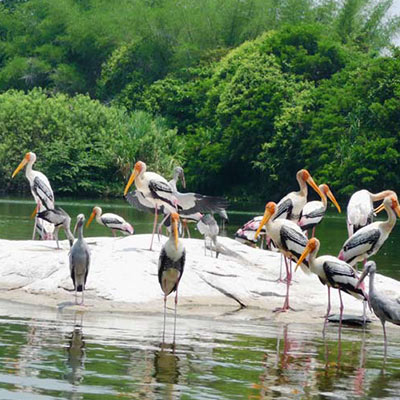
- : Kavanattinkara, Kumarakom, Kerala 686563.
- : Nearest railway station: Kottayam, about 13 km
Nearest airport: Cochin International Airport, about 94 km. - : 6:00 AM - 6:00 PM
- : 2-3 hours.
- : The best time to visit the Kumarakom Bird Sanctuary is in the months of November to February, The ideal time to visit the place for those who wish to spot local birds is from June to August.November to February.
- : .
 Basic info
Basic info
Also called Vembanad Bird Sanctuary, Kumarakom Bird Sanctuary is located on the banks of Vembanad Lake in Kumarakom, Kerala. Spread across 14 acres on the southern bank of the River Meenachil, the bird sanctuary is run by Kerala Tourism Development Corporation. The major attractions of the sanctuary are cuckoo, egret, cormorant, darter, waterfowl, owl, and migratory birds such as Siberian Crane, lark, flycatcher, etc. There is also a resort in the middle of the bird sanctuary. Kerala Tourism Development Corporation has also opened an interpretation center for the help of visitors.
Kuravan Kurathi Statue, Kerala.
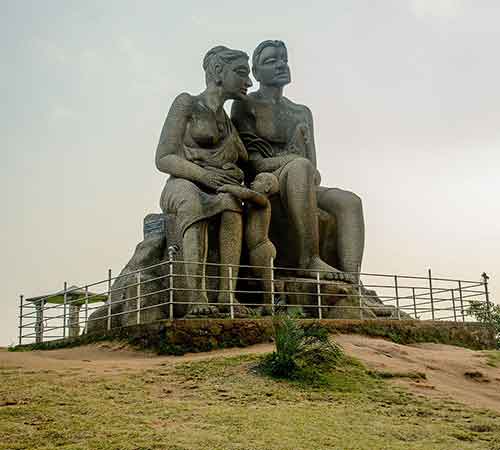
- : Kuravan Kurathi Statue, Ramakkalmedu, Dist-Idukki, Kerala 685552..
- : Nearest railway station: Chenganashery-90 km & Nearest airport: Madurai- 145 km..
- : 8:00 AM - 6:00 PM
- : 1-2 hrs..
- : September-May.
- : Budget-friendly and luxurious hotels and resorts are available..
 Basic info
Basic info
The Kuravan Kurathi Statue, which was sculpted by C.B Jinan, has been erected on one of the hills of Ramakkalmedu in August 2005 and was made open to the public in 2006. It is regarded as the signature relic of Ramakkalmedu. The Ramakkalmedu hills are situated at a height of 3500 mt above sea level in the Western Ghats.
Depicting two historical persons, this statue has shown that these two characters have some relation with the construction of Idukki Arch dam, as this dam connects two massive rockey hills named as Kuravan Mala (Kuravan Hill) and Kurathi Mala (Kurathi Hill). These two characters is said to be of Sangam Period of Kerela and is also, the Kuravan and Kurathi are two native community of Idukki and the construction of the Idukki dam was being proposed by a Kuravan.
The Idukki dam is built with a height of 167.68 metres in 1969-1973 on the Periyar river, and is one of the highest arch dams in Asia and third tallest arch dam in the world. This dam is the biggest power source of the state also one of the most visiting place in Kerela.
Ramakkalmedu hills are in itself very nice visiting place as from here the whole landscape of Kerela and Tamil Nadu can be viewed. This place experiences thousands of tourists each day who come to experience the panoramic view of this place. It got its name from the Hindu Lord Ram. Locals say that Lord Ram had set his foot on the tallest rock of this place during his expedition to search Sita after she was kidnapped by the demon King Raavan of Sri Lanka, which occurred during his 14 years long exile from Ayyodhya.
Previously it was named as Ramakkal later it was renamed as Ramakkalmedu. Literally it means "Land of Rama’s Stone” or “Land where Lord Ram set his holy foot" [RamaKal-Ramma’s Rock and Medu-hills].
Another unique feature of this place is that it gets blowing winds throughout the year irrespective of the season and time. Here the wind blows at a speed around 35km/ hour. Due to this a wind energy farm is installed here at villages like Pushpakandam and Kuruvikanam near Ramakkalmedu, even though its a private holding it provides electricity to Kerala State Electricity Board. Currently the capacity is at about 12.5 MW of NEG MICON Make Wind Mills. Presently there are seven wind farms installed here out of which the Kerala Chief Minister V.S. Achuthanandan inaugurated the first established wind farm in Idukki.
Light House Beach Road, Kerala.
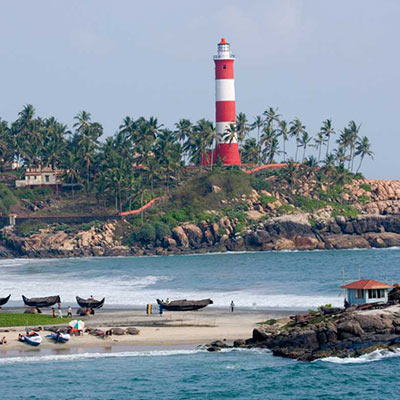
- : Kovalam, Kerala 695528.
- : Nearest railway station: Thiruvananthapuram Central, about 11 km.
Nearest airport: Trivandrum International Airport is about 10 km.. - : 10:00 AM - 6:00 PM �Closed on Monday
- : Around 1-2 hours.
- : October to March.
- : Budget & Luxury Hotels available..
 Basic info
Basic info
Lighthouse Beach is one of the important attractions in Kovalam. Tourists can climb up to the top of the lighthouse through a spiral staircase. The summit of the lighthouse offers spectacular views of the coastline in Southern Kerala. The place is well-suited for tourists who wish to experience the gentle breeze in Kerala along with some beautiful photographs.
Mattancherry Palace, Kerala.
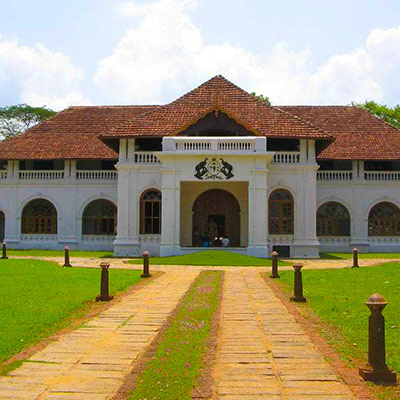
- : Mattancherry, Kochi, Kerala, 682002, India.
- : Nearest railway station: Ernakulam, about 10 km
Nearest airport: Cochin International Airport, about 42 km. - : 10:00 AM - 5:00 PM (Closed on Firdays)
- : 1-2 hrs.
- : October to March.
- : Luxuries to budget hotels are available..
 Basic info
Basic info
Famously known as the Dutch Palace, Mattancherry Palace is a Portuguese palace in Mattancherry, Kochi, Kerala. The palace was established and gifted by the Portuguese as a gift to the king of Chin in 1555. As some extensions and renovations were made in the palace in 1663 by Dutch, the palace thereafter became famous as the Dutch Palace. Today, the palace is a gallery of the portraits of the rulers of Cochin and some of the best mythological murals.
The palace is a quadrangular structure, built in Nālukettu style, the traditional architectural style of Kerala. In the middle, there is a courtyard having a small temple dedicated to Pazhayannur Bhagavati, the protective goddess of the royal family of Kochi. Besides, there are many other attractions in the Mattancherry Palace.
Mattupetty Dam, Kerala.
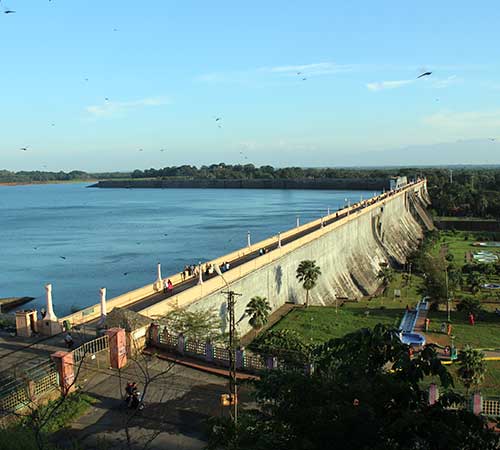
- : Mattupetty Dam, Mattupetty, Munnar, Idukki District,Kerela -685612 , India.
- : Nearest railway station: Angamaly, via Aluva - Munnar (109 km), Nearest airport: Cochin International Airport, (108 km)..
- : 9:30 AM to 5:00 PM
- : 3-4 hrs..
- : October to March..
- : Budget-friendly and luxurious hotels and resorts are available..
 Basic info
Basic info
TMattupetty Dam is a storage concrete gravity dam situated in the hill station of Munnar in Idukki district of Kerala. The lush green meadows and pleasant climate attracts thousands of tourist every year. The dam is at a height of 1700 metres above the sea level located in the Munar hills near the Anamudi peak and conserves the water of Muthirappuzha, Chanduvarai, and Kundale rivers. It was built in 1953 with a total capacity of 55.4 million cubic meter under the Pallivasal Hydro Electric Project. It produces hydroelectricity and is a vital source of power yielding for the state of Kerela.
The perennially available water provides the optimum conditions for the wild animals and birds to grow, which indeed makes Kerala, “Gods own country”.
In addition to this the reservoirs are well known as the visiting ground of elephants. The cool climate, wonderful diversities of animal and birds, the view of substantial amount of water stored in the reservoir is worth enough to pay a visit.
There is also vegetarian restaurant which is nearby this dam providing scrumptious delicacies and refreshing beverages.
This place is best for those who love trekking and jungle walk. People can enjoy water sport activities like speed boating which is organized by district Tourism Promotion Council of Idukki (Munnar).
 Things to do
Things to do
- Mattupetty Lake-is just few kilometers away has serene ambience which is covered in a mist of clouds and is one of the best places for relaxing.
- Indo Swiss Farm Project or Livestock project- is 3 km from the Dam. It was launched in the year 1963 as a part of the bilateral agreement between Indian and Swiss government. Due to this project this place is also called “cattle village”. This farm has hundreds of high yielding cattle which can be seen grazing freely on the hills.
Muzhappilangad Beach, Kerala.
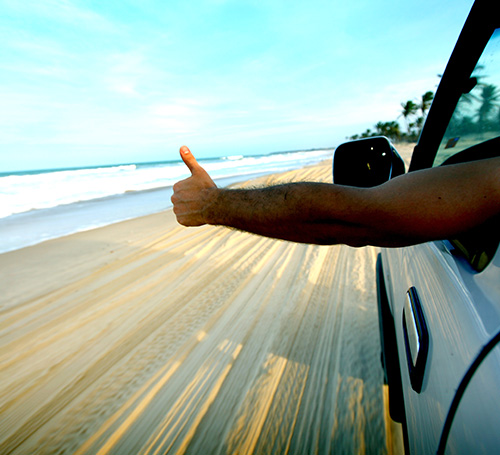
- : Muzhappilangad, Kannur, Kerela-670662..
- : Nearest railway station: Kannur (Main Station)(16 km) Thalassery (12 km). Nearest airport: Calicut International Airport (102 km)..
- : Any time
- : 1 to 2 days.
- : October to March..
- : Budget-friendly and luxurious hotels and resorts are available..
 Basic info
Basic info
Muzhappilangad beach is the largest drive-in beach of Asia located in the district of Kannur and is parallel to National Highway 66. It can be reached by airways and railways, Kannur airport is the nearest airport 25km away, whereas Edakkad railway station is only 1km away. If driving is your favourite then it is a paradise for you. Driving along the shore is pure bliss. In addition to the cool breeze, sandy roads it is a bird watching hotspot which makes the beach more beautiful, as many as 30 species of migratory birds visit in winter. The beach is bordered by black rocks which provides habitat for blue mussel (Seafood).
The beach festival in April is a special attraction which is a perfect destination for foodies. The rush of the wind and the salty sea air make this the kind of spot that everybody should throw on their bucket list before them “Runaway”. Being only drive-in beach in India it has a unique place in the tourism map and is a birds watch view hot spot place.
Persons who like adventurous sports like paragliding, parasailing and micro light flights along with water sports, power boating or a simple catamaran ride can enjoy it here. This is the best place to experience all these sports. It attracts tourists around the year since it is the only drive in beach of India. The lip-smacking dishes of the Malabar cuisines available here, are a must to have at least once. Keeping every thing in mind it can be said that this is a perfect weekend getaway to book in.
 Things to do
Things to do
- Dharmadam Island-is a private island
- Sree Koormba Temple
- Thottada Beach
- Thalassery
- Muzhappilangad Bhagavathy Temple
Napier Museum, Kerala.
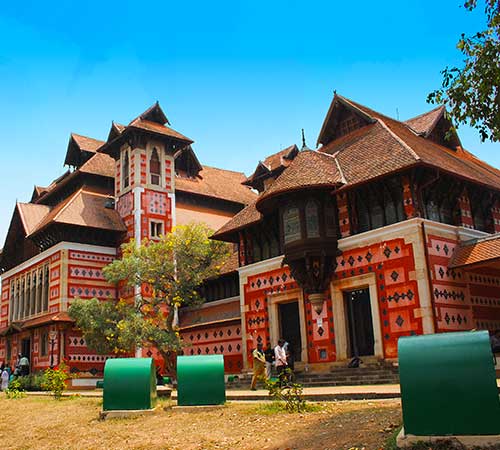
- : Napier Museum, L.M.S Vellayambalam Road, Kanaka Nagar Thiruvananthapuram..
- : Nearest Railway Station: Thiruvananthapuram Central Railway Station- 3 km, Nearest Airport: Trivandrum International Airport - 9km.
- : 10 am - 5:00 pm (remains closed on Monday and Wednesday forenoon and on National Holidays)
- : 3 - 4 hrs..
- : September to March.
- : Budget-friendly and luxurious hotels and resorts are available..
 Basic info
Basic info
Napier Museum, an art and natural history museum, is situated in the capital city of Kerala that is Thiruvananthapuram. Established in 1855 and named after Lord Napier the governor of Madras presidency from 1860-1872 is an architectural masterpiece designed by Robert Chisholm, who made the new building by demolishing the old one in 1880. Its origin relies upon the joint efforts of J.A. Brown, then Director of the Trivandrum Observatory and General William Cullen, then British Resident and the Government finally approved Browns idea of starting a Museum in a part of his Bungalow.
It is a landmark of unique architectural style which is a combination of Kerala, Chinese, Italian, and Mughal architecture. The Indo-Saracenic structure acts as a natural air-conditioning system. . It has a wide range of collection that includes- Archaeological and historic artefacts, bronze idols and ancient ornaments.
The “Sree Chitra Art Gallery “ is an absolute treat for art lovers which includes the art of Raja Ravi Verma, Mughal art and Tanjor art. Museum ground also holds the Trivandrum zoo spread over 55 acres. If you are in Thiruvananthapuram, then Napier museum is a good option for recreation.
It displays Kerela’s rich culture and heritage. It counts to 550 items which is displayed in this museum. The displayed articles includes artistic, cultural and antique objects comprising of sculptures in bronze and stone, carving of wood and ivory, lamps, textiles, Kathakali models, handicraft items, Koftgari works, traditional musical instruments, a treasure of numismatic collections representing Chera, Chola, Pandya dynasties of Southern India etc.
Coins from different ages are also displayed here which counts up to 5480 coins coming under 9 major categories.
Tickets for its entry is being sold till 4:30 pm. Use of video camera, still camera and mobile phones and any act inconveniencing or disturbing the fellow visitors or Museum management are being prohibited here. It is approachable by frequent buses, Auto-rickshaws, Taxi cars etc. It also has a ticketed parking facility.
Paradesi Synagogue, Kerala.
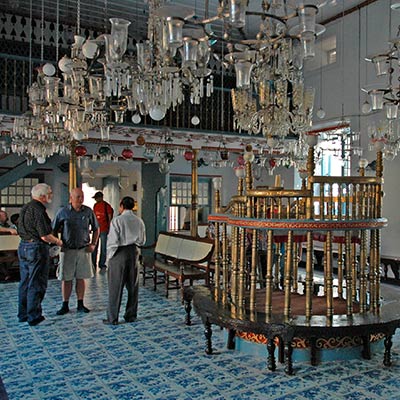
- : Synagogue Ln, Jew Town, Kappalandimukku, Mattancherry, Kochi, Kerala 682002.
- : The place can be reached by road, taxi or bus..
- : 10 am to 12 noon; Afternoon - 3 pm to 5 pm.
- : 30 minutes to 1 hour.
- : October to March.
- : Budget & Luxury Hotels available..
 Basic info
Basic info
Located in Kochi, Paradesi Synagogue is the oldest active synagogue in Kerala. Established in 1568, it is one of 7 synagogues of the Jewish community of Cochin. Built by Sephardic or Spanish speaking Jews, it is also referred to as Cochin Jewish Synagogue and Mattancherry Synagogue. The synagogue complex has four buildings. The synagogue has separate seating areas for men and women. Moreover, visitors are allowed to abide by certain rules while paying a visit to the Paradesi Synagogue.
Pathiramanal Kumarakom, Kerala.
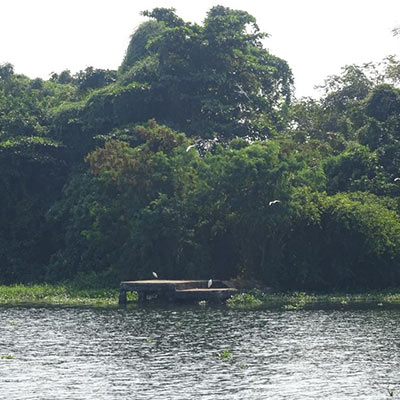
- : Kumarakom, India.
- : Nearest railway station: Alappuzha, about 16 km
Nearest airport: Cochin International Airport, about 85 km north of Alappuzha. - : 9:00 AM - 8:00 PM
- : .
- : October to March.
- : Budget & Luxury Hotels are available..
 Basic info
Basic info
Pathiramanal is a small island in Muhamma panchayat of the Alappuzha district in Kerala. The island is home to various rare species of migratory birds from different corners of the world. Situated in Vembanad Lake, the island came into the ownership of the government in 1979. Earlier, it was the property of Chevalier ACM Anthraper who purchased it from M/s Bheemji Devji Trust of Cochin. Featuring about 91 local species and 50 species of migratory birds, it is a birdwatcher’s paradise. Tourists can spot night heron, watercock, little cormorant, monarch flycatcher, gulls, Indian shag, and many others.
Payyambalam Beach, Kerala.
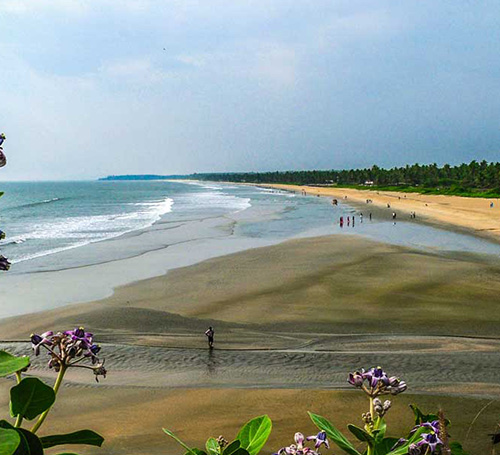
- : Payyambalam Beach, Payyambalam, Kannur, Kerala 670001 ..
- : Nearest railway station - Kannur Raiway Station (2 km). Nearest airport - Calicut International Airport (93 km)..
- : Any time
- : 3-4 hrs..
- : October to February..
- : Budget-friendly and luxurious hotels and resorts are available..
 Basic info
Basic info
One of the five beaches of the Kannur beach, the Payyambalam beach is impeccably maintained destination and provides seclusion giving an opportunity to simply relax and enjoy with family by doing picnic in absolute tranquility. The beach also offers surfing and swimming options for those who seek a little adventure. The gentle waters form a picturesque setting that has been featured in many South Indian movies as well. It’s closeness to the town of Kannur has made it a favourite in the list of places frequented by the tourists. Sunbathing and swimming can be done in this beach and it is one of those places that will make any person feel confined to local dressing code.
It is one of the favourite haunt for tourists and locals alike. This beach is best known for the well constructed and laid out gardens. It also has a gigantic sculpture of the mother and the child by Kanayi Kunhiramanin that was erected here. It is also famous due to the fact that the remains of Swadeshabimani Ramakrishna Pillai, A.K Gopalan, Pamban Mandavan and K.G Marar are laid to rest near this place. One can enter in this beach by a walking bridge over a small canal which is the main access for it.
The essential plus points about the Payyambalam Beach are its cleanliness and one can find peace here as it is not so crowded, though in the evening it finds people who love find it a perfect place to roam about near the sea.
 Things to do
Things to do
- Dharmadam Island,
- Andalur Kaavu,
- Thalasseri fort,
- Beaches of Kizhunna,
- Ezhara,
- Kadalai and Thottada,
- Arakkal Museum,
- Mappila bay,
- Meenkunnu Beach,
- Kannur town( shpopping & food),
- Parassinikkadavu Muthappan Temple,
- Snake Park,
- Vismaya, Muzhappilangad drive-in-beach
- Sea View Park
Periyar Tiger Reserve, Kerala.
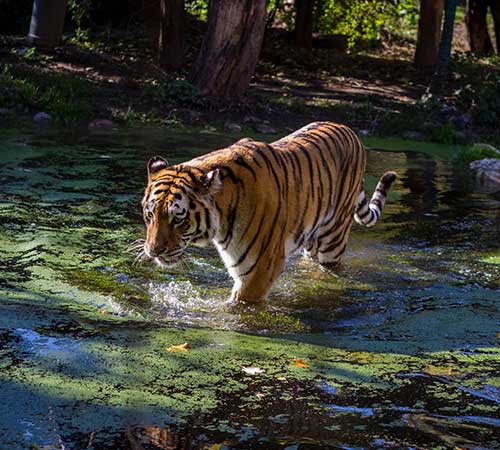
- : Periyar National Park, Idukki, Kottayam and Pathanamthitta, Kerala..
- : Nearest Airport: Madurai-145 km & Cochin-190 km, Nearest Railway Station: Kottayam- 114 km..
- : 6:00 AM - 3:00 PM
- : As per convenience..
- : October to May..
- : Budget-friendly and luxurious hotels and resorts are available..
 Basic info
Basic info
Located high in the Cardamom Hills and Pandalam Hills of the south Western Ghats along the border with Tamil Nadu, the Periyar Tiger Reserve also called as Periyar National Park and Wildlife Sanctuary or Thekkady is a protected area which is near Thekkady in the Idukki, Kottayam and Pathanamthitta districts.
It covers around an area of 925 sq km and out of that 304 sq km of the core zone was declared as the Periyar National Park in 1982. It holds within it rare, endemic and endangered flora and fauna and also forms the major watershed of two important rivers of Kerala, the Periyar and the Pamba. It observes tourists all the year round because of its captivating beauty and mesmerising scenes.
The visitors can enjoy this place as it has a facility of bamboo rafting, nature walk, green walk, jungle scout, border hiking, jungle camp etc.The wealthy Periyar Forest has in it
Flora: Consists of 1965 flowering plants including 171 grass species and 143 orchid species. It also has the growth of the only south Indian conifer, scientifically known as Podocarpus Wallichianus.
Fauna: Mammals- 60 species in number including Asian Elephant, Bengal Tiger, Indian Bison, Sambar Deer, Indian Wild Dog, Leopard, Barking Deer and the Smooth-Coated Otter. Nilgiri Tahr, endangered Lion Tailed Macaque, Bonnet Macaques and Nilgiri Langur etc can be found here.
Birds- Including migratory birds it has around 265 species. he Malabar Grey Hornbill, The Indian Pied Hornbill, Whitebellied Treepie, many species of Drongos, Woodpeckers, Flycatchers, Babblers, the spectacular Malabar Trogon, etc. can be seen.
Reptiles- Include Cobra, Viper, Krait, a number of non-poisonous snakes, and the Indian Monitor Lizard.
Amphibians- Frogs like the colorful Malabar Gliding Frog, Fungoid Frog, Bicolored Frog, many species of toads, and limbless Caecilians.
Plantations- Tea, cardamom, pepper and coffee plantations abound in the areas adjoining the Tiger Reserve.
Also there are various watch towers inside this Tiger Reserve made for excellent view of the wildlife.
 Tourist attractions
Tourist attractions
Periyar Lake, Kumily-A small town best known for cardamom hills,
Mangla Devi Temple, Pullumedu-another wild life sanctuarys .
Rock Cut Cave Temple, Kerala.
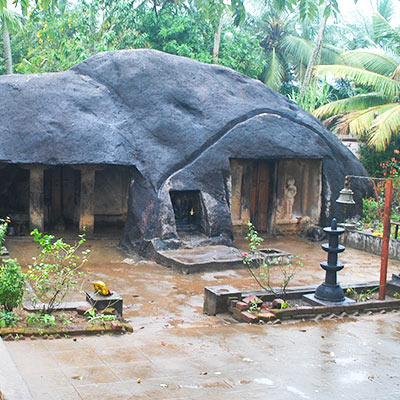
- : South of Kovalam junction, Vizhinjam 695521, India.
- : Nearest railway station: Thiruvananthapuram Central, about 12 km
Nearest airport: Trivandrum International Airport, about 13 km. - : 09:00 AM - 06:00 PM
- : 2-3 hours.
- : October to March.
- : Luxuries to budget hotels are available..
 Basic info
Basic info
Located near Trivandrum in southern Kerala, Vizhinjam Cave Temple is the 8th-century Hindu temple at Vizhinjam. There is a one-celled shrine with a loose sculpture of Vinadhara Dakshinamurti. The façade of the cave portrays unfinished reliefs of Shiva as Tripurantakara on the left and Nataraja with Parvati on the right.
Samudra Beach Park, Kerala.
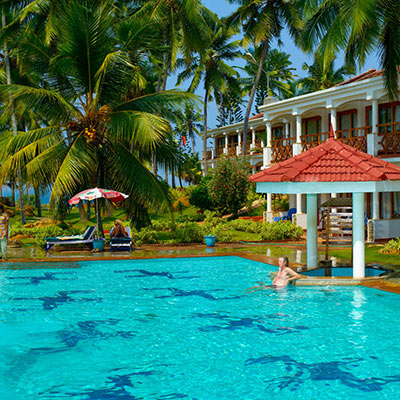
- : Kovalam, Kerala 695527.
- : Nearest railway station: Thiruvananthapuram Central, about 11 km away from the beach
Nearest airport: Trivandrum International Airport, about 11 km away. - : Open 24 hours
- : 2 hour.
- : November to February.
- : Budget & Luxury Hotels are available..
 Basic info
Basic info
Samudra beach is one of the must-visit sites in Kovalam. Located towards the north of Kovalam beach, it is separated from other beaches by giant promontory and disjointed fissures. What makes the beach unique from all others is that it is not crowded like other beaches of the town. As the beach does not receive a large tourist population, local fishermen use the coastline for fishing. Here, one can spot wooden fishing vessels. Tourists can opt for a visit to Samudra beach if they wish to spend some time in isolation while admiring the natural beauty. The coconut trees and palm line the shore, hence enhancing its appeal.
Sivananda Yoga Vedanta Dhanwantari Ashram, Kerala.
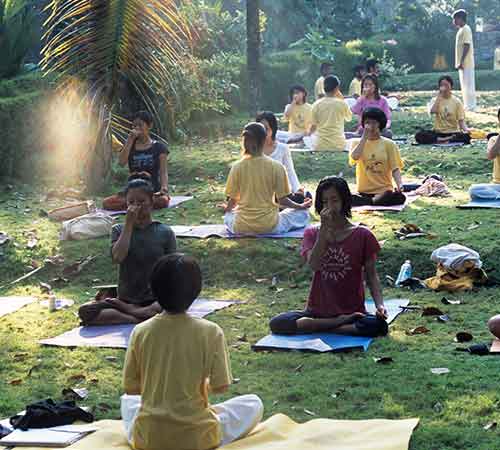
- : Sivananda Yoga Vedanta Dhanwantari Ashram, P.O.- Neyyar Dam, Trivandrum, Kerala- 695572.
- : Nearest Airport: Trivandrum- 33.5 km, Nearest Railway Station: Trivandrum Central-29 km.
- : 5.30am to 10pm.
- : 3 days (Two weeks recommended).
- : October to April.
- : Budget-friendly and luxurious hotels and resorts are available..
 Basic info
Basic info
Founded by Swami Vishnudevananda, the International Sivananda Yoga Vedanta Dhanwantari Ashram, stands on a foothill near the Neyyar river which flows placidly giving it a relaxing view. It was named in the honour of the founder’s teacher H.H. Sri Swami Sivananda Saraswati Maharaj, who was one of the most influential spiritual teacher of the twentieth century.
Due its location the ashram excludes tranquility and has picturesque surroundings. Many groups of guests mostly foreigners come here to to relax in the open courtyard and enjoy a light schedule. They are also free to simply relax and explore or even step out.
It is regarded widely as an excellent yoga school, having a solid training and its cost depends on the type of accommodation. Visitors can opt for twin share (some rooms have common bathrooms), dormitory, and tent space (bring own tent). Here classical yoga techniques, are taught in a warm and friendly environment, which helps to inculcate in guests the deep awareness of spiritual essence in life.
Its basically a Hindu-centric ashram which has a substantial Hindu religious aspect which includes three to four hours of chanting per day, plus prayers to Hindu deities and to the ashram’s founding gurus. It has a capacity to withhold around 400 participants at a time making it too much over crowded. January is the peak month for this ashram and it remains busy from October to April.
This is located on a fairly remote area, for which making short strolls into nearby towns becomes next-to-impossible. Internet is very limited here though this place is crowded. The Neyyar Lake on whose bank this ashram is made brings on the cool breeze making this place more convenient to an already beautiful mild forest area around it which adds to its appealing location. Though this place during the summer experiences temperature increase up to 35 degree Celsius but the shady forest which surrounds this ashram provides lots of respite and during the winter its temperature barely goes below 24 degree Celsius. Thus this place can be approached anytime in the whole year.
Meals (only vegetarian) are served two times a day (at 10 am and 6 pm) and it prohibits back tea and coffee. The schedule of this ashram is really strict.People who want a peaceful place should visit this ashram.
Sree Kumaramangalam Subramanyaswamy Temple, Kerala.
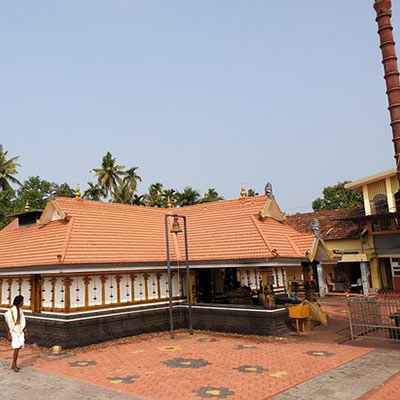
- : Near Boat Yard, Kumarakom- Vaikom Road, Kumarakom, Kottayam, Kerala 686563.
- : .
- : 09:00 AM To 06:00 PM
- : 30 minutes.
- : October to December & January to March.
- : Budget & Luxury Hotels available..
 Basic info
Basic info
The great social reformer, Sree Narayana Guru consecrated the idol of Lord Subrahmanya at Sree Kumaramangalam Subramanyaswamy Temple in 1903. A festival is held on Pooyam day in the Malayalam month of Kumbham at the temple. Besides, several cultural programs such as the performances of Ottan thullal, Kavadi, Faruda Nruttam, Amman kudam, and Nadaswaram are organized at the temple.
St Francis Church, Kerala.
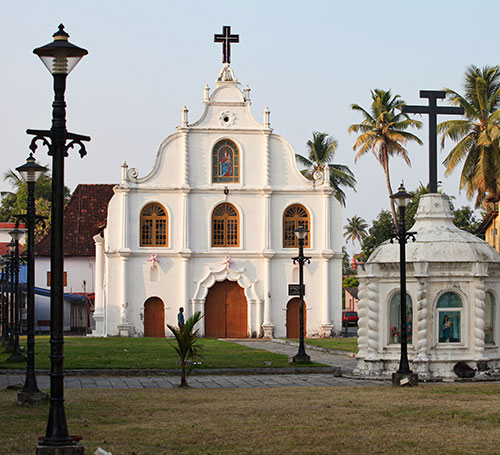
- : Fort Kochi, Kochi, Kerala, 682001, India.
- : The St. Francis Church is located in the main of Fort Kochi which makes it easily accessible from every corner of Kochi city. .
- : 7.00 am to 6.30 pm (Monday to Saturday) and 8.30 am to 6.30 pm (on Sunday)
- : 1 - 2 hrs.
- : The best time to is during the winter season or late autumn..
- : There is no shortage of suitable hotels to stay here..
 Basic info
Basic info
Established in 1503, St. Francis Church is one of the oldest European churches in India, located in Cochin. The church was a mute witness to the European colonial struggle in the subcontinent. The Portuguese explorer Vasco Da Gama died in 1524 in Kochi during his 3rd visit to the country. His remains were buried in this church. Later, they were removed to Lisbon after 14 years. Visitors can still view the gravestone of the Portuguese explorer at the southern side of the church. Moreover, the gravestones of other Portuguese are on the northern sidewall while those of the Dutch are on the southern wall. The church also has cenotaphs in memory of those who died in World War I.
Thanneermukkom Bund, Kerala.
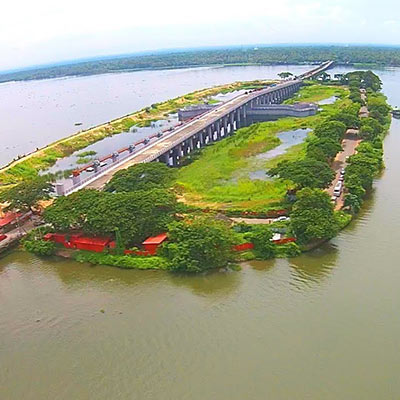
- : Vembanad Lake, Kerala.
- : Nearest railway station: Cochin International Airport, about 40 km, Nearest airport: Eranakulam Jn Train Station, about 44.9 km..
- : 12 pm to 12 am every day.
- : 45 minutes to 1 hour.
- : The best season to visit this place is winter..
- : Luxuries to budget hotels are available..
 Basic info
Basic info
Established in 1974, Thanneermukkom Bund (Thannermukkom Salt Water Barrier) is the largest mud regulator in India. The Bund was built as a part of the Kuttanad Development Scheme, which aimed at preventing tidal action and intrusion of saltwater into the low lands across Vembanad Lake. It divides the lake into two parts – one with freshwater and the other with brackish water. The portion having freshwater is the one and only coastal reservoir in India.
The barrier has also adversely affected the environment. It has helped the farmers of Kuttanad, where farming is done below sea level. On the other hand, it has created various ecological problems. Moreover, the saltwater leads to pollution of the backwaters and nearby land areas.
The Great Backwaters, Kerala.
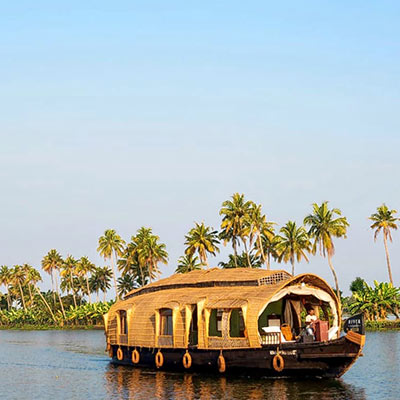
- : Punnamada, Vembanad Lake, Kerala 688521.
- : Buses and taxis are easily available at all times of the day from Kottayam..
- : Open 24 hours
- : 2-3 hours.
- : September and March.
- : .
 Basic info
Basic info
It is a well-known fact that backwaters are the major attraction of Kerala. One such serene destination where tourists can experience the beauty of backwaters is Kumarakom. The Great Backwaters in Kumarakom is a water world, spread across 900 km around Vembanad Lake in Kerala. Formed by the shore currents and action of waves across the mouth of rivers flowing down from the Western Ghats mountain range, these backwaters attract a significant no. of tourists from all over the world. There are coconut palms, paddy fields, meandering lagoons, and mangroves at backwaters in Kumarakom. The Great Backwaters also have a wide variety of flora and fauna, including pearl spotted fish (karimeen), tiger prawns (konju), crabs (njandu), etc.
Thiruvizha Mahadeva Temple, Kerala.
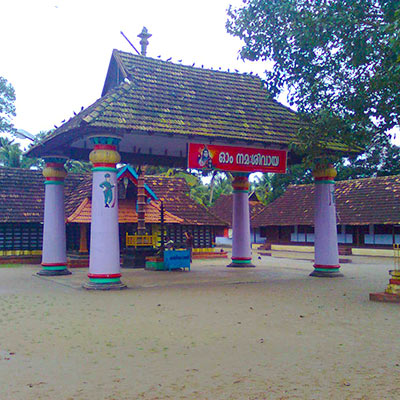
- : Thiruvizha Mahadeva Temple Road, Thiruvizha, Kerala 688530.
- : .
- : 05:00 to 20:00 (All days of the week)
- : 4 hours.
- : The month of March and April when the Aarattu festival is held in the temple..
- : Budget & Luxury Hotels are available..
 Basic info
Basic info
Located in Cherthala South, Thiruvizha Mahadeva Temple is an ancient temple dedicated to Lord Shiva. The deity is worshipped in the form of Lord Kalakandha, who swallowed the poison to save the world. It is believed that people visit the temple for seeking blessings, curing mad and people who have poison in their bodies. A special ingenious medicine is given to them, which makes them vomit out the poison.
Tholpavakoothu - The Shadow Puppet Play, Kerala.
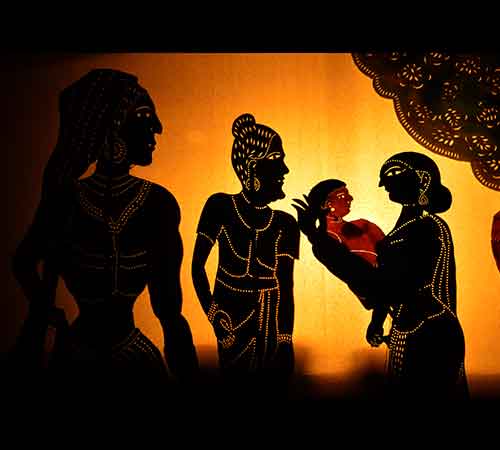
- : Kerala Puppet Centre, Palakkad Ponnani Rd, Koonathara, Kavalappara, Shoranur, Kerela-679523, India..
- : Nearest Airport: Coimbatore (Coimbatore International Airport- 60 km, Nearest Railway Station: Shoranur Junction Railway Station- 7 km..
- : 12:00 am-11:59 pm.
- : More than 3 hrs..
- : Any time of the year..
- : Budget-friendly and luxurious hotels and resorts are available..
 Basic info
Basic info
An ancient ritualistic art form, Tholpavakoothu-The Shadow Puppet Play of Kerala, is practiced in Kerela at Thrissur, Palakkad and Malappuram Districts. This art form is basically dedicated to Bhadrakali- a Hindu goddess popular in Southern India, regarded as a firecy form of Goddess Durga. It is performed in Devi temples at specially built theatres called as koothumadams-which is a 42 feet long stage. Lots of visitors come to see this unique art form which has its roots from 9th Century AD.
Going to this place is really worth it to enjoy this traditional and ritualistic art form and it really attracts lots of tourists the whole year.
About Tholpavakoothu:The word “Tholpavakoothu” is a combination of three words- Thol means leather, Pava means doll and Koothu means play and these plays use Kamba Ramayana as the basic text for their story line with words in Tamil, Sanskrit and Malayalam language.
About the Puppets: The puppets are made up of dear skin but now a days goat skin are used for making it. First of all figures are drawn on the skin, then they are cut and after wards embellished with dots, lines and holes. Finally when the skin gets completely dehumidified all the hairs are being removed with the help of a sharp-edged bamboo piece.Vegetable dyes are used for colouring them. The show is done with the help of more than 150 puppets.
About the Puppeteers: Pulvara, is the lead puppeteer, which is an honorific given to a puppeteer who is also a scholar. They have to go intensive training for about 6 to 10 years, should be well versed in Kamba Ramayana, the vedas and puranas, Ayurveda, and be trained in classical music.
Trivandrum, Kerela, Kovalam, Kerala.

- : Kovalam Beach, Kovalam, Dist-Trivandrum, Kerela-695527..
- : Nearest railway Thiruvananthapuram Central railway station (16km). Nearest Airport-Trivandrum International Airport (10 km)..
- : Any time
- : As per convenience.
- : September to March.
- : Budget-friendly and luxurious hotels and resorts are available..
 Basic info
Basic info
This is a beach which faces the Arabian sea and is at the metropolitan area of Thiruvanthapuram of Kerela, about 18 km from the centre of the city. Due to the presence of endless sight of Grove of Coconut trees (which in malyalam is called Kovalam) this place thus got its name. This Beach is famous for its crescent which is formed by the three separate rocky outcropped beaches in its 17 km long coastline. The three beaches are Lighthouse Beach, Hawah Beach and Samudra Beach. The Light House Beach, which is the southernmost beach and most which attracts the most number of tourists, got its name due to the old Vizhinjam Lighthouse located on a 35 meter high on top of Kurumkal hillock. The Hawah beach, also known as the Eve beach ranks in second in tourist attraction and is a beehive of fisherman activities in the early hours of the day. The beach creates a unique aquarelle on moonlit nights because of it's high rock promontory and a calm bay. The Samudra beach has a large promontory which separates it's southern side and doesn't have tourists thronging or hectic business. This part is mainly used by fishermen to ply their trade.
 Things to do
Things to do
Karamana River, Vellayani Lake, Halcyon Castle, Kovalam Art Gallery, Valiyathura Pier, Neyyar Dam, Aruvikkara Dam, Thiruvallam Parasurama Temple, Vizhinjam Rock Cut Cave Temple
Varkala Beach, Kerala.
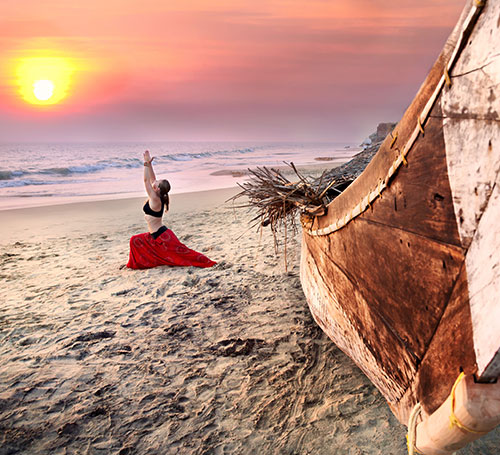
- : Varkala Beach,Varkala Beach Road,Varkala,Kerela-695141..
- : Nearest airport -Trivandrum International Airport (50km)..
- : Any time
- : As per convenience.
- : September to March.
- : Budget-friendly and luxurious hotels and resorts are available..
 Basic info
Basic info
Located in south Kerala at the north end border of Trivandrum district, this beach is best for tourists who prefer a peaceful vacation. This beach is the only place in south of Kerala where cliffs are found adjacent to the Arabian Sea. These cliffs are formed from tertiary sedimentary rocks which the geologists named as Varkala Formation which are regarded as a geological monument and is recorded under the Geological Survey of India.
It also has water spouts and spas on one of its sides.
This beach is counted as one of the top ten seasonal beaches in the world by discovery channel, and has a stunning beauty of landscapes, brown sand and sea. It is a perfect spot to relax with a laidback atmosphere and popular for swimming and sunbathing. This beach also offers striking sunset views and breathtaking scenes of its winding stretch of cliff over the Arabian.
The Beach, also known as Papnasam Beach is renowned for a natural spring and is considered to have medicinal and curative properties. Papanasham means to wash away sins. It is said that a dip in the holy waters can purge the body of impurities and the soul of all sins.
It also has several tourist attractions which includes a 2000 year old Vishnu Temple and the Asharam-Sivagiri Mutt. The Samadhi of the Guru is also nearby and attracts thousands of devotees every year during the Sivagrir Pilgrimage days held from 30 December to 1 January.
Sree Narayana Guru have propagated the ideology of ‘one caste, one religion and one God’ in a society torn by taboos.
 Things to do
Things to do
- Janardana Swami Temple-known for a 10-day festival
- Sivagrir Mutt
- Vishnu Temple-2000 years old
- Papanasam Beach & Cliff
- Anchengo Fort & Light House
- Sivagiri Tunnel
Vellar Tourist Village, Kerala.
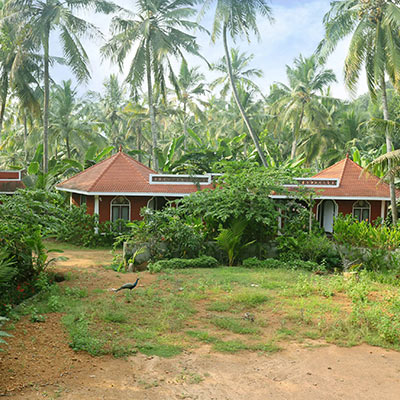
- : Vazhamuttom, Thiruvananthapuram, Kerala 695527.
- : .
- : 8am-6pm
- : 2-3 Hrs.
- : October to March.
- : Luxuries to budget hotels are available..
 Basic info
Basic info
Vellar is a rocky village near Kovalam in Thiruvananthapuram. It is an art and craft village, where tourists can explore handicraft stalls, taste local dishes at food joints, and avail of recreational facilities. Based on the model of Dilli Haat, Vellar tourist village comprises of three sections, namely Travancore, Kochi, and Malabar.
Vellayani Lake, Kerala.
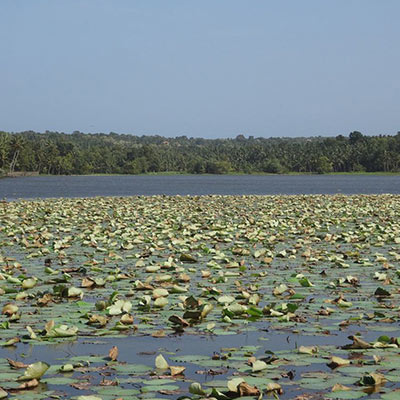
- : Lake Rd | 7 Km from Kovalam, Kovalam, India.
- : The Vellayani Lake is located at a distance of 7 km from the centre of Kovalam. So, you can hire a cab or board a tourist bus to reach the lake..
- : Sunrise to Sunset
- : 1-2 hours.
- : August to February.
- : Luxuries to budget hotels are available..
 Basic info
Basic info
Locally known as Vellayani Kayal, Vellayani Lake is the largest freshwater lake in Thiruvananthapuram district in Kerala. The major attractions of the lake are a road passing through it and a bund. The lake is a major tourist spot in the town. A large no. of tourists flock the lake during moonlit nights when the lake appears much more scenic. During Onam, a boat race is also hosted on the lake, attracting several tourists.
Village Life Experience, Kerala.
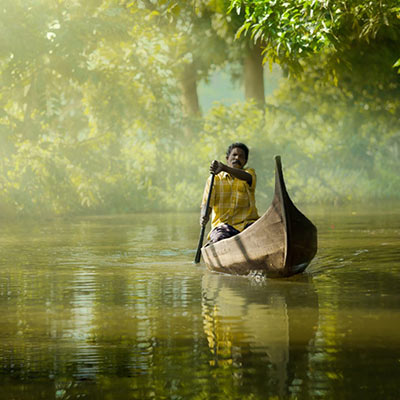
- : Kavanattinkara, Kumarakom, Kerala 686563.
- : .
- : sunrise to sunset
- : I day..
- : October to April.
- : There is no shortage of suitable hotels to stay here..
 Basic info
Basic info
Village Life Experience is a half-day activity offered in Kumarakom, Kerala. It provides tourists with a wonderful experience of village life in Kumarakom. During the activity, visitors will get to interact with the locals, who will tell them about their culture, traditions, and livelihood activities. It not only gives tourists a different experience but it also engages locals by allowing them to guide visitors. Moreover, it brings additional income to the local families, who participate in the activity. The activity has been crafted bearing in mind the interests of the locals. Furthermore, it contributes to the conservation of the natural and cultural heritage of Kerala.
Willingdon Island, Kerala.
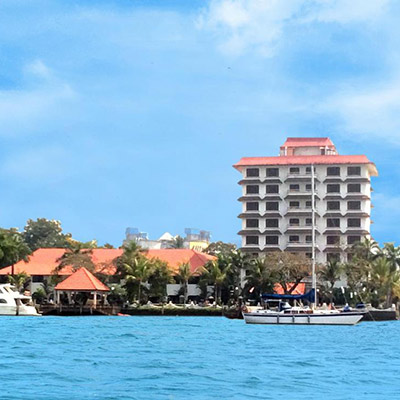
- : Kochi Port, Off Kochi City, Kochi (Cochin), India.
- : This beach can be reached by either a public or a private transport..
- : 5 a.m. to 10 p.m. daily.
- : 3-4 hrs.
- : October to April every year.
- : Luxuries to budget hotels are available..
 Basic info
Basic info
Willingdon Island is the largest artificial island in India, located in Kochi, Kerala. The island is home to the Kochi Naval Base of the Indian Navy, Custom House Cochin, Central Institute of Fisheries Technology, Plant Quarantine Station, and the Port of Kochi. The island was created in 1936 during the construction of the modern port. It was named after The 1st Earl of Willingdon, the Viceroy of India at the time. The island has a port hostel, a dry dock, a fire station, tank farms, a hospital, and religious shrines. Moreover, the island is a hub of international trade as a no. of port offices, branches of national and international banks, travel agencies, souvenir shops, and warehouses.







